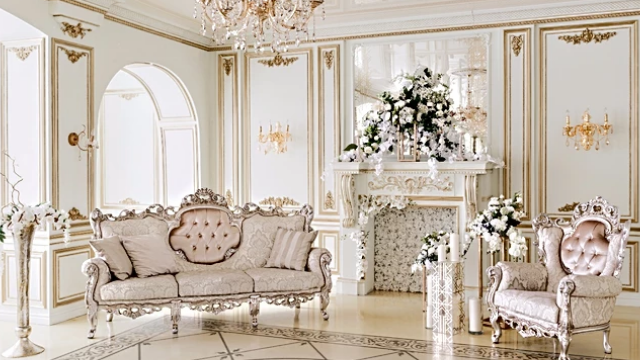Contemporary interior design is both art and science. It has a lot to do with how our bodies and brains react to our surroundings.
When you get the interior designing elements to work together, you will bring an enhanced functionality. An interior designer usually begins with assessing the room according to the elements and then uses them to disguise the several characteristics and flaws of the space.
Here, we’ll discuss the seven key elements of interior design:
1. Space
Space is the foundation of an interior and of great importance, as no plan or design can work without it. In order to make the most out of interior design, you need to work with what you have with the physical boundaries of the room.
In interior design, you can work within three-dimensional space (length, width, and height). You can either fill this space or leave it empty, depending on your specific requirements. Space can be divided into two classes:
- Positive Space:
It is a space that is filled with décor items and furniture, such as dining tables, living room couches, etc.
- Negative space:
It is the vacant space in your living area (including any space between objects).
To avoid overcrowding, you must strike a balance between the negative and positive spaces of the room.
2. Lines
The lines in interior design help in guiding and navigating the eyes through the interiors of the space. There are three primary types of lines:
- Horizontal Lines:
These lines offer a more peaceful and tranquil feeling to a room. Horizontal lines can make your space appear wider and more expansive. However, too much of this design element can make the space dull.
- Vertical Lines:
These lines help define the height of a room. Vertical lines typically give the illusion of a room being taller. However, if these lines are used frequently, the space may feel confined.
- Dynamic Lines:
These lines refer to curved, zigzag, and diagonal lines. Dynamic lines provide energy and movement. They encourage the eyes to move in the direction of the line. However, too many dynamic lines can be distracting.
4. Form
Forms typically imply shapes in space, as well as any objects within the room. Anything that is two-dimensional will have a shape; on the other hand, every three-dimensional thing will have a form.
Two Types of Forms are:
- Geometric Forms:
These are square edges and the hard lines that form the outline of the room. The forms are usually a result of man-made construction.
- Natural Forms:
These forms are organically flowing and not precisely defined.
Another way of categorizing forms:
- Open Forms:
They are associated with the visible objects and are in the open, for example, a room, gym, and washroom.
- Closed Forms:
Closed forms contain self-contained objects, for example, plants, rugs, and furniture.
4. Light
Light is a vital aspect of any space, whether it’s natural or artifical. Without it, other elements can’t shine to their full potential. The two main types of lighting are:
- Natural Lighting
Natural light represents warmth and joy. Also, utilizing natural light at different times of the day is an essential aspect of interior design.
- Artificial Lighting
When natural light is sufficient to set the mood, you can use artificial lighting. Task lighting, mood/ambient lighting, and accent lighting are three types of artificial lighting.
Task light provides light for particular work, such as for reading purposes or working in the kitchen. Mood lighting illuminates the room and highlights it well. Accent lighting highlights a specific space or objects to give decorative effects.
5. Colour
Colors help to define the vibrancy of the space. It can also create mood and change the perception of how large or small a space is. Varying colors inspire different feelings. For instance, green suggests peace and tranquillity, red represents hunger, and purple represents royalty. Thus, it is essential to recognize the color palette you want to use in each space of your home.
6. Texture
In interior designing, the texture is the perception of a surface. It’s not necessary that the texture will feel as it looks. Types of textures:
- Visual:
This texture offers the look of the object but does not feel like it upon touching.
- Actual:
This texture, on the other hand, gives the true feel of the object.
7. Pattern
A pattern is a collection of forms and lines, and it can accentuate a particular part of the interior, be it walls, ceilings, or stairs. When implementing patterns, you must first consider the size and style of your room.

